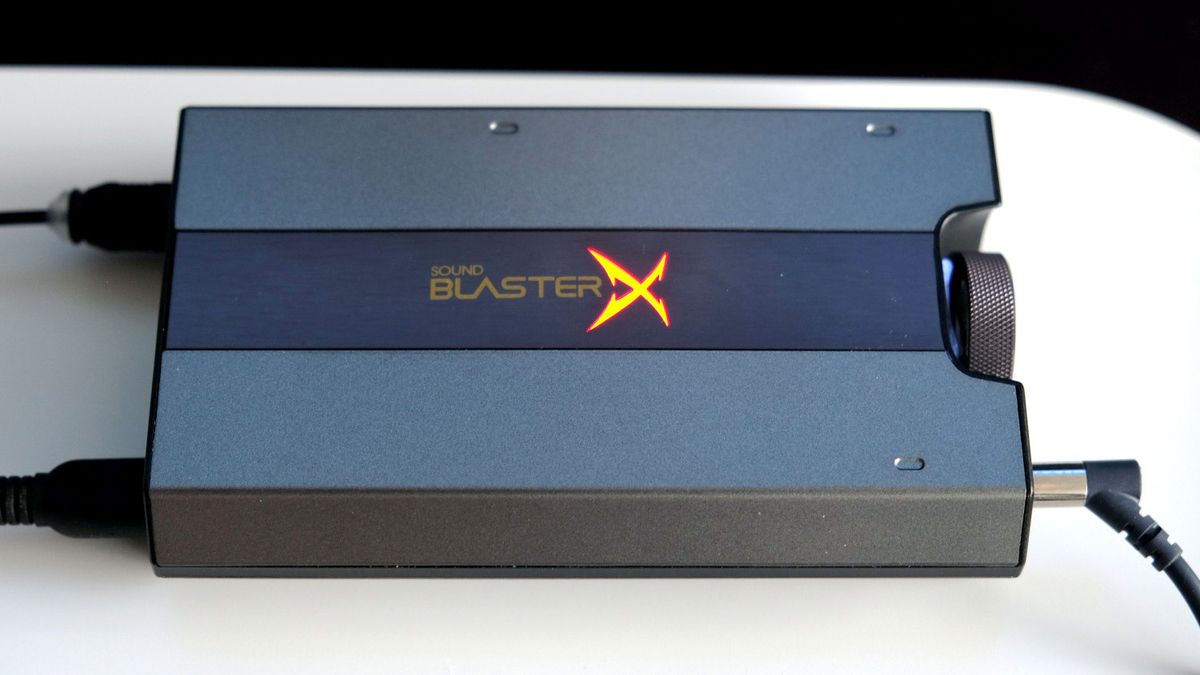TechRadar Verdict
Pros
- +
Great sound quality
- +
Easy setup
- +
Works with PCs and consoles
Cons
- -
Cables are a little short
- -
No adapter for wall outlets
- -
A bit pricey
Why you can trust TechRadar
Getting a sound boost on a PC used to be invasive – requiring you to buy and install a sound card to get the best audio from your PC. Portable DACs and amplifiers have made it easier to veer away from built-in tinny sound, but console gamers haven't always been so lucky.
But that's a problem Creative’s new Sound BlasterX G6 hopes to solve.
Somewhere in between an external sound card, amplifier and exceptional DAC, this thing is anything but a one-trick pony. Whether you fancy yourself a PC or console gamer, the G6 doesn’t discriminate. Creative made it versatile enough to work with Windows, PlayStation 4, Xbox One and even the Nintendo Switch.
The beauty of it is the other end is agnostic: Plug in any pair of headphones, from expensive cans to a cheap pair of earbuds, and the difference is audible.
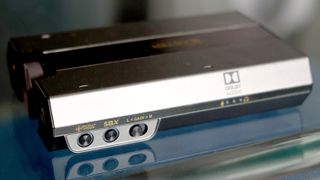
Design
The G6 is the successor to the G5, but also carries the legacy of the E5, a mini-amp that worked wonders with both PCs and mobile devices. With a 130dB and 32-bit/384kHz DAC, plus support for Dolby Digital decoding and 5.1 and 7.1 virtual surround sound, there’s a lot under this small hood.
The device itself is only a little bigger than a deck of cards, so it doesn’t need a lot of space, though cables need to be plugged in from two ends. While small and nimble, we can’t say there’s no clutter when using the G6.
The main advantage in something like the G6 is its compatibility on both ends. The PC or console side is one thing, but the fact that any pair of headphones will work on the other negates the need to buy a dedicated gaming headset. There’s a lot of technical stuff going on to make this happen, and we found it wasn’t all that important to recognize how it all works – the fact it consistently did was good enough.
A simplified explanation is that the G6 amplifies both the left and right channels individually using discrete components to boost and clarify audio output. Standard headphone amps do both channels at once, which is fine for music but not ideal for games that have separate signals going to each ear.
The G6 does need a constant power source throughout, which comes through the microUSB port on one end. An optical input and output is on one side, with a headphone jack and microphone jack on the other, flanking a volume knob. Along one edge is the scout/direct mode button, SBX button, headphone gain switch and LEDs for the headphone input/output indicator.
In the box, Creative includes a microUSB cable and optical cable to facilitate the key connections. We would’ve liked a longer optical cable for console setups because, as is, it doesn’t cover that much ground in a living room or basement. There’s also no power supply for the USB-A side to plug into a wall. We used a third-party one we had lying around or just plugged into a USB port on the console or PC.
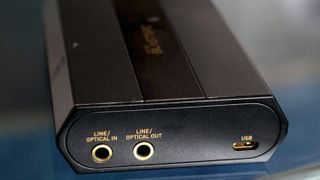
Setup
The good news is that you don't have to be an audiophile to get the G6 setup: there was no real calibration required to get the G6 up and running.
We tried it first on a PS4, where we connected the optical cable to the port in the back and one of the USB ports in the front. After plugging in a pair of Sennheiser headphones and starting up the console, we eventually got audio to come through. (We didn’t have an Xbox One or Switch nearby to try out, but we suspect the situation wouldn’t be all that different.)
On a PC, it’s a little different because of the Sound Blaster Connect desktop app, which offers greater customization. It would've been nice to carry some of the settings from the PC to the console however, because the G6 doesn’t have internal memory to store settings like that, we weren’t able to replicate any of the custom features when playing on a console.
We would advise going with a headphone cable extension in living room situations: Despite playing up the console functionality, Creative designed the cable layout for the closer proximity of desktops, like those usually seen in eSports setups.
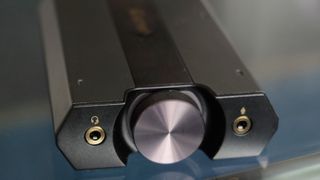
Performance
We noticed an audio boost immediately once we fired up the G6 – thanks, especially, to a Creative technology called Scout Mode that enhances the ambient noises and not only add some character to a game, but also help determine a course of action. Footsteps or voices come through a little clearer and louder, offering a tactical advantage when moving or hiding to avoid and ambush enemies – and all of that is done without also cranking up the volume.
But if you wanted to, you could boost it by switching the gain from low to high, amplifying all audio coming through the headphones. With Wolfenstein II, for instance, the boost helped to tip us off when an enemy was moving closer without having eyes on them.
Turning on the SBX mode only impressed us further. It felt like having a surround system between the ears. This mode not only amplifies things further, but adds spatial audio enhancements using algorithms to simulate a wider soundstage.
It’s interesting, and there’s a lot of technical stuff going on to make it happen, but we should stress that this is all virtualized.
You can never fully replicate what multiple physical speakers can do in a room. Creative has instead tried to simulate the experience, and the results were easy to like. We not only heard footsteps, gunshots, voices and other sounds, we also knew precisely from whence they came.
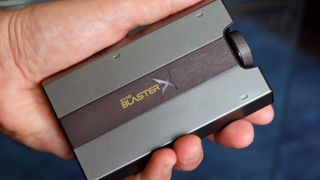
Playing Spider-Man on PS4, we felt like swinging through New York was every bit an audible concrete jungle. The way a train passed through in Battlefield I was awesome. Games with great music, like that one or the Shadow of the Colossus remake, only benefitted from the additional boost.
Nevertheless, we would say it’s an acquired taste. The algorithms, as good as they are, don’t necessarily adjust volume levels for different sounds. For instance, you may be in a quiet area in a game, only for the music to jolt your ears once something dramatic happens. That’s not entirely Creative’s fault, mind you, since they don’t engineer any of the games, but some additional work would be good there.
We tried different headphones to gauge any differences, concluding that quality helps get more out of the audio amplification. That’s probably stating the obvious, but the good news is that even aged gaming headphones will feel like they got a newer lease on life from the G6.
Verdict
At $150 (around £115, AU$200), the Sound BlasterX G6 isn’t a cheap add-on, either for a PC or console setup. Its focus is somewhat narrow, but if sound matters to you, you’re guaranteed a boost here without having to invasively tinker with anything.
Unfortunately, you’ll have a tougher time applying this to other use cases outside gaming: Yes, technically you can plug this in directly to a TV’s optical input and get power from a USB adapter plugged into a wall outlet – that way, you could watch movies and shows with a 3D audio effect – but you'll need longer cables to pull that off if you’re looking to lean back on the couch in the living room.
We had fun with the G6 and recommend it first to gamers looking to boost sound quality and gain a competitive edge. For anything else, Creative and other sound companies of its ilk probably have something better suited for it.
- Are you an audiophile? Don't miss our round-up of the best portable DACs
Ted Kritsonis is the Freelance Tech Journalist. He is a Tech journalist contributing to a dozen publications: Globe and Mail, MobileSyrup, Futurithmic, Android Central, TechRadar, and WhatsYourTech.ca, among others.
Most Popular




